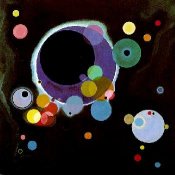EMORY IMPROVISATIONS Home Page

![]()
MATERIALS OF IMPROVISATIONS:
Water,
Emory, April 2004
Belts, University
of Rhode Island (Providence). March 2003
Arranging and
Arrangments, Emory University. March 2001
![]()
Experiments in collective improvisations began in Moscow (Russia) in 1982 and continued in the USA since 1996.
Typical invitation to a session of Collective Improvisation:
We are seeking between 5 and 12 participants willing to devote several hours to the following exercise. Each member of the group will propose a topic, out of which one will be chosen by negotiation. An hour or so will be devoted to individual writing on the chosen topic, followed by individual reading and group discussion of each essay. Participants should be prepared to improvise on any topic, including the trivia of everyday life, from the angles of their professional discipline, personal experience or philosophical world view. They are also invited to become specialists in alternative, virtual or non-existent disciplines.
This improvisational session is what might be called a metaphysical assault on everyday things. It can also be identified with the task Richard Rorty has set for thinkers of the future: to be "all purpose intellectuals . . . ready to offer a view on pretty much anything, in the hope of making it hang together with everything else."
![]()
1) each participant suggests a topic for the improvisation.
2) discussion of these topics, choice of one of them, and distribution
of its various aspects among participants (each chooses his own personal
and professional angle on the subject);
3) writing individual essays (1 hour);
4) reading and discussion of essays;
5) collection of all written materials into a coherent whole,
a micro-encyclopedia of the given topic.
![]()
On the theory and history of Collective Improvisations: